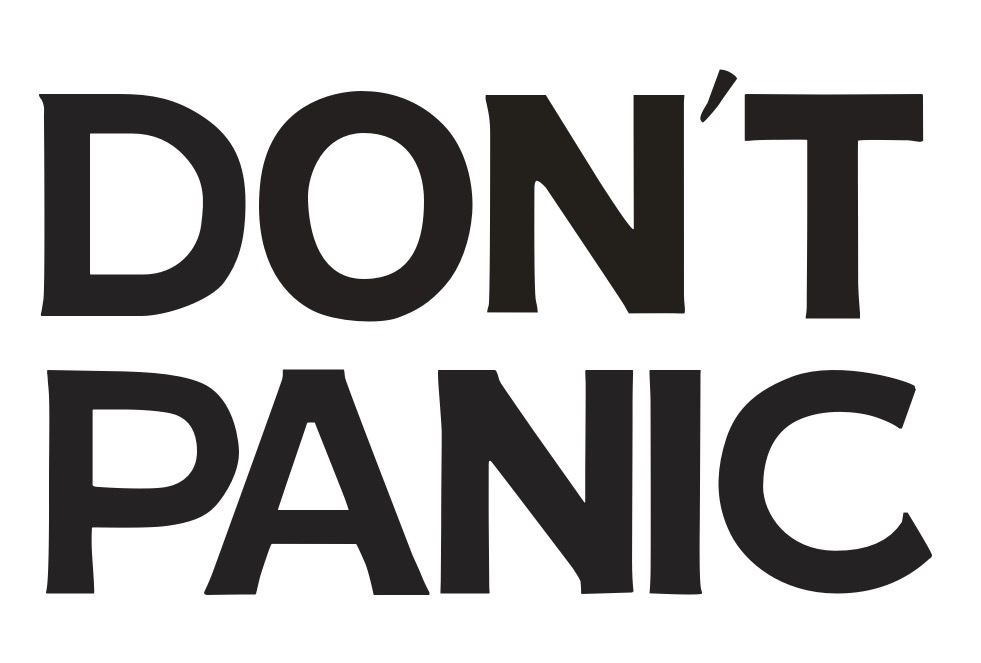Art or what chooses you
The backbone of our work through (nearly) everything we have done
We started each project with a slab and chiseled away until something recognisable started to emerge.
Why start with art?
An artistic approach to our work, commercial or self-initiated, was very much present throughout the time Hi-ReS! existed. This doesn't mean we saw ourselves as artists - in fact we were always at pains to distance ourselves from the label. But it did mean that there were no strategists, we didn't research our audience or create personas. We started each project with a slab and chiseled away until something recognisable started to emerge. Our references were mostly from the art world, often really obscure and hard to sell to a client. We were a nightmare for our producers because deadlines were, at best, rough indications of when something might be done and often things changed until the last days of a project. It was mostly an obsession with finding a new way. And it was often something that chose us rather than the other way around.
Therefore, it seems fitting that the first chapter of this site is devoted to the projects that were the purest expression of this approach.
An artistic approach to our work, commercial or self-initiated, was very much present throughout the time Hi-ReS! existed. This doesn't mean we saw ourselves as artists - in fact we were always at pains to distance ourselves from the label. But it did mean that there were no strategists, we didn't research our audience or create personas. We started each project with a slab and chiseled away until something recognisable started to emerge. Our references were mostly from the art world, often really obscure and hard to sell to a client. We were a nightmare for our producers because deadlines were, at best, rough indications of when something might be done and often things changed until the last days of a project. It was mostly an obsession with finding a new way. And it was often something that chose us rather than the other way around.
Therefore, it seems fitting that the first chapter of this site is devoted to the projects that were the purest expression of this approach.


The nearly unusable interface of soulbath
Soulbath
This is where it all started… way back in 1999.
And soulbath.com could be described as our first real website.
Sub-titled 'Greyscale Paradise', it was almost entirely void of colour and celebrated malfunction as a source of beauty and surprise.
It was built in late 1999 within the 30-day period of the Macromedia Flash 4 Trial version with next to no knowledge of the web in general or Flash in particular.
In June 2000, we followed up with clickhere!, an exhibition of banners that we curated from an open submission call to fill the banner space with meaning and to sell something other than a product. Although often referred to as an exhibition of 'anti-banners', the idea was not so much to be anti banner or anti commercial, but rather to use this seemingly failing advertising space - remember, we are in 2000, the dotcom bubble bursting in front of our eyes - to sell an idea, an emotion, a story, anything you could fit on the small canvas we provided. The result was a wildly eclectic mix of activism (eg. Adbusters), interactivity (eg. Soda), rants, small narratives and pretty pictures, housed in a virtual exhibition space.
This is where it all started… way back in 1999.
And soulbath.com could be described as our first real website.
Sub-titled 'Greyscale Paradise', it was almost entirely void of colour and celebrated malfunction as a source of beauty and surprise.
It was built in late 1999 within the 30-day period of the Macromedia Flash 4 Trial version with next to no knowledge of the web in general or Flash in particular.
In June 2000, we followed up with clickhere!, an exhibition of banners that we curated from an open submission call to fill the banner space with meaning and to sell something other than a product. Although often referred to as an exhibition of 'anti-banners', the idea was not so much to be anti banner or anti commercial, but rather to use this seemingly failing advertising space - remember, we are in 2000, the dotcom bubble bursting in front of our eyes - to sell an idea, an emotion, a story, anything you could fit on the small canvas we provided. The result was a wildly eclectic mix of activism (eg. Adbusters), interactivity (eg. Soda), rants, small narratives and pretty pictures, housed in a virtual exhibition space.
And it was then that things were catapulted beyond anything we could have anticipated when clickhere! caught the attention of Matthew Mirapaul, then Arts Editor-at-large for the NY Times, who decided to run an article on it in the newspaper.
Having created this first self-initiated Hi-ReS! project and with a NY Times article under our belt, doors suddenly opened to commercial projects, the most important of which is Darren Aronofsky's Requiem for a Dream, about which we will speak more later.
But soulbath also resonated with brand managers from companies as diverse as Playstation, Mitsubishi and NTT. We had truly managed to create our own destiny as they asked us to do more of the same. And of course we didn't do the same but we were finally...
...getting paid

Love your ?
Banners and code
In 2001, a year after clickhere!, we actually created a banner... as a part of Japanese telecom company NTT Data's 'Mind the Banner' project, for which they invited 10 design teams,
among them Me Company, Tomato, Kyle Cooper and Exonemo to interpret the theme "Love your ?" and to create a banner which would lead to their piece.
Our piece, MoshiMoshi, recreated recognisable physical environments with simple geometric shapes at night and during the day..
Our piece, MoshiMoshi, recreated recognisable physical environments with simple geometric shapes at night and during the day..
The NTT project started a period of projects for Japanese clients. While Love your ? was done with TYO, our next projects were done in collaboration with the advertising giant Dentsu.
But despite the projects advertising Mitsubishi cars, we were able to focus on more abstract concepts like motion and the joy it brings. And we never even featured a car in the first one.

i-move-u
The journey becomes the destination
I-move-u, created for Mitsubishi with Dentsu and AOI in Tokyo, was the last in a series of experimental websites - all commissioned by Mitsubishi - to explore the concept of movement in new ways.
Our site was built on the idea of the disappearance of the space between A and B - we focus on our destination, while neglecting the journey.
On i-move-u.com the journey became the destination.
On i-move-u.com the journey became the destination.
The Third Place is the brand idea of PlayStation2 across all European markets.
The concept centres on the idea that PlayStation2 is a gateway to another world - The Third Place. This is a mental or spiritual place, which can't be defined as it's different for everyone. No one can tell you about your Third Place, you have to discover it for yourself. The Third Place is about exploration, discovery and adrenaline. Neither inside nor outside, not waking nor sleeping, here nor there - The Third Place is what you make it. The Third Place undergoes constant mutation through use/play, the Third Place is a place where the impossible becomes possible.
Over the course of 2002, the thirdplace.com developed into an online art-gallery, designed and curated by Hi-Res! and sponsored by PS2. The idea was to commission artists to develop interactive pieces based on their idea of the third place, every piece is located in the space according to an emotion that we attached to it: fear, play, inspiration, addiction.
Contributors to the TTP were:
Insertsilence, Daniel Brown, Soulbath, Yugo Nakamura, James Tindall, Niko Stumpo, Han Hoogerbrugge, Future Farmers and Hi-ReS!
The concept centres on the idea that PlayStation2 is a gateway to another world - The Third Place. This is a mental or spiritual place, which can't be defined as it's different for everyone. No one can tell you about your Third Place, you have to discover it for yourself. The Third Place is about exploration, discovery and adrenaline. Neither inside nor outside, not waking nor sleeping, here nor there - The Third Place is what you make it. The Third Place undergoes constant mutation through use/play, the Third Place is a place where the impossible becomes possible.
Over the course of 2002, the thirdplace.com developed into an online art-gallery, designed and curated by Hi-Res! and sponsored by PS2. The idea was to commission artists to develop interactive pieces based on their idea of the third place, every piece is located in the space according to an emotion that we attached to it: fear, play, inspiration, addiction.
Contributors to the TTP were:
Insertsilence, Daniel Brown, Soulbath, Yugo Nakamura, James Tindall, Niko Stumpo, Han Hoogerbrugge, Future Farmers and Hi-ReS!


